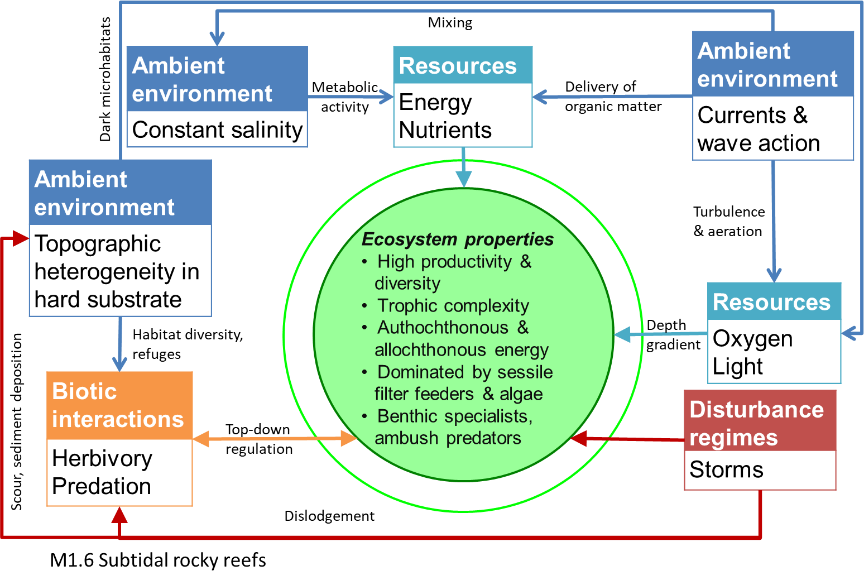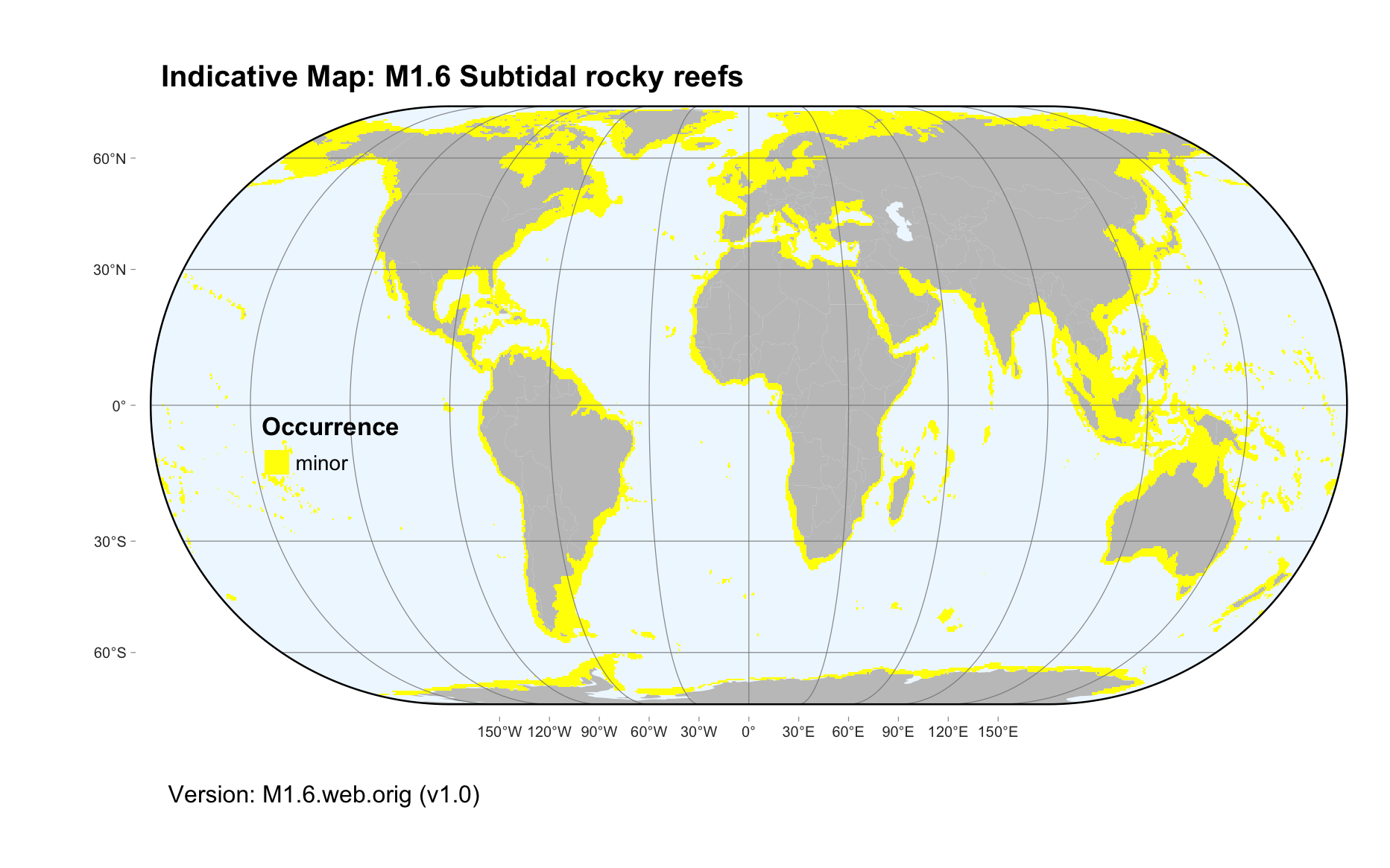Global ecosystem typology
Alternative site for the Global ecosystem typology with additional information for ecosystem profiles and indicative maps.
This site is maintained by jrfep
M1.6 Subtidal rocky reefs
Biome: M1. Marine shelf biome
Contributors:
(texts)
These rocky subtidal ecosystems are widespread globally on ocean shelves . They are distinguished from kelp forests (M1.2) by their lack of a dense macroalgal canopy. Indeed, their complex habitat structure is derived mostly from irregular rock forms, rather than biogenic features, and supports a diverse epibenthic fauna, with a range of mobile benthic animals (e.g. anemones), while truly sessile organisms tend to be small (e.g. turf algae, barnacles). Community structure depends on depth, wave action, currents and light: for example, turbulence specialists like barnacles are more prolific on shallower, higher energy reefs. Storms impact structure by shifting sand and dislodging larger organisms episodically.
Key Features
Productive systems with functionally diverse sessile and mobile biota, and a strong depth gradient.
Overview of distribution
Continental and island shelves.
Profile versions
- v1.0 (2020-01-20): BA Polidoro; EJ Gregr; DA Keith
- v2.0 (2020-06-15): BA Polidoro; EJ Gregr; SE Swearer; SN Porter; DA Keith
- v2.01 ():
- v2.1 (2022-04-06): BA Polidoro; EJ Gregr; SE Swearer; SN Porter; DA Keith Full profile available at official site
Main references
Selected references for this functional group:
Sebens K (1985) The ecology of the rocky subtidal zone American Scientist 73: 548-557. URL
Diagrammatic assembly model

Maps
Maps are indicative of global distribution patterns are not intended to represent fine-scale patterns. The maps show areas of the world containing major (coloured red) or minor occurrences (coloured yellow) of each ecosystem functional group. See general notes on maps.
There are 2 alternative versions of the indicative map for this functional group, please compare description and sources below.
M1.6.IM.orig_v1.0
Datasets
- GSFM-2014
Map references
Harris PT, Macmillan-Lawler M, Rupp J, Baker EK (2014) Geomorphology of the oceans. Marine Geology 352: 4-24. 10.1016/j.margeo.2014.01.011
M1.6.web.orig_v1.0

Datasets
- GSFM-2014
Map references
Harris PT, Macmillan-Lawler M, Rupp J, Baker EK (2014) Geomorphology of the oceans. Marine Geology 352: 4-24. 10.1016/j.margeo.2014.01.011
Check: the Glossary / Profile structure / the public document